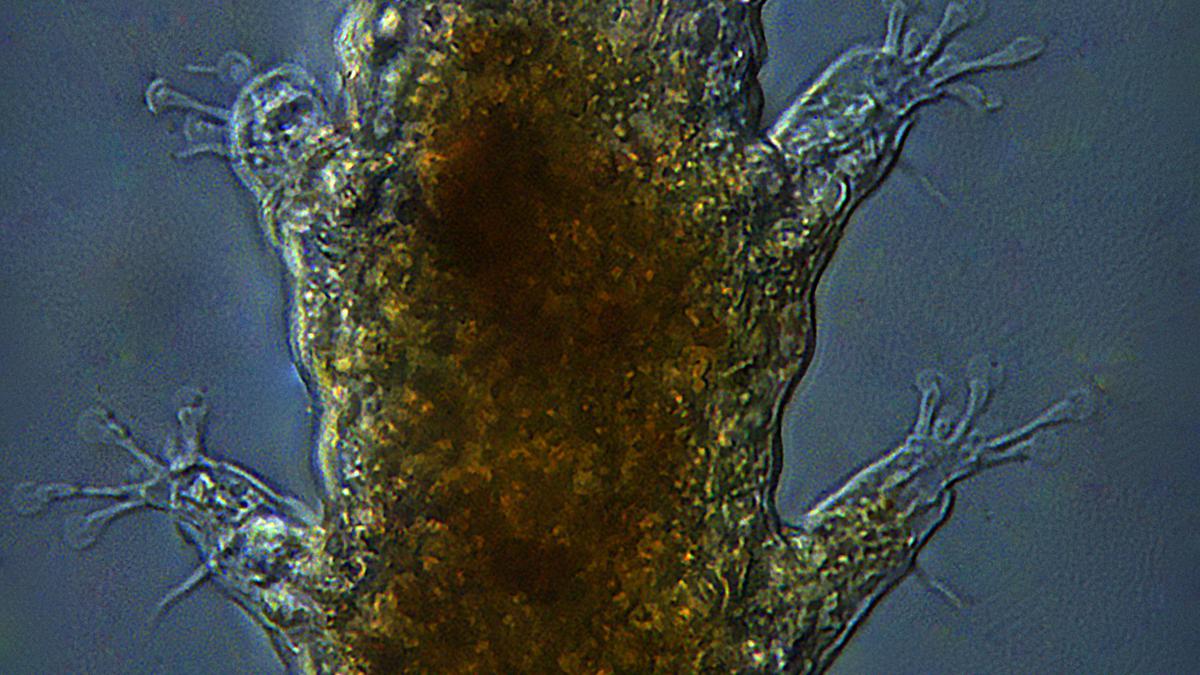
New marine tardigrade species named after former President A.P.J. Abdul Kalam
The Hindu
CUSAT researchers discover new species of marine tardigrade, Batillipes kalami, in Mandapam, Tamil Nadu. Named after late President A.P.J. Abdul Kalam, it is the second marine tardigrade species from India and the first from the east coast. It is the 37th species of the genus Batillipes and is 0.17mm in length and 0.05mm in width. Studies of marine tardigrades from Indian waters are limited, making detailed studies along the Indian coast necessary.
Researchers at the Cochin University of Science and Technology (Cusat) have identified a new species of marine tardigrade which they have named after the late former President and scientist A.P.J. Abdul Kalam.
Tardigrades are extremely tiny animals whose size is measured in micrometres. Their microscopic size, however, belies their toughness. They are known for their extraordinary resilience and survival instincts. Studied using microscopes, these water-dwelling animals also go by the rather unlikely moniker ‘water bears.’
The new species, discovered from Mandapam in south-east Tamil Nadu, belongs to the genus Batillipes and has been named Batillipes kalami. A paper on the discovery by Vishnudattan N.K. (research scholar) and S. Bijoy Nandan (Professor) of the Department of Marine Biology, Microbiology and Biochemistry, Cusat, and Marcus Rubal, Centre of Molecular and Environmental Biology, University of Minho, Portugal, has appeared in the latest issue of Zootaxa.
There are a number of aspects that make the discovery important from a scientific perspective: Batillipes kalami is the second marine tardigrade to be discovered from Indian waters and the first one from the east coast. It is also the first taxonomically described species belonging to the genus Batillipes from India, said Dr. Nandan.
In 2021, Mr. Vishnudattan and Dr. Nandan discovered the first marine tardigrade species from India at Vadakara in Kerala. They had named it Stygarctus keralensis.
Size-wise, Batillipes kalami averages 170 micrometres (0.17 mm) in length and around 50 micrometres (0.05 mm) in width. It has a trapezoid-shaped head with sharp-tipped filament-like appendages (cirri) extending from it. All four pairs of legs possess sensory spines of varying length.
“The females are slightly bigger compared to the males,” Mr. Vishnudattan said. The marine species are smaller than their terrestrial counterparts and also tougher to identify.

“Writing, in general, is a very solitary process,” says Yauvanika Chopra, Associate Director at The New India Foundation (NIF), which, earlier this year, announced the 12th edition of its NIF Book Fellowships for research and scholarship about Indian history after Independence. While authors, in general, are built for it, it can still get very lonely, says Chopra, pointing out that the fellowship’s community support is as valuable as the monetary benefits it offers. “There is a solid community of NIF fellows, trustees, language experts, jury members, all of whom are incredibly competent,” she says. “They really help make authors feel supported from manuscript to publication, so you never feel like you’re struggling through isolation.”

Several principals of government and private schools in Delhi on Tuesday said the Directorate of Education (DoE) circular from a day earlier, directing schools to conduct classes in ‘hybrid’ mode, had caused confusion regarding day-to-day operations as they did not know how many students would return to school from Wednesday and how would teachers instruct in two modes — online and in person — at once. The DoE circular on Monday had also stated that the option to “exercise online mode of education, wherever available, shall vest with the students and their guardians”. Several schoolteachers also expressed confusion regarding the DoE order. A government schoolteacher said he was unsure of how to cope with the resumption of physical classes, given that the order directing government offices to ensure that 50% of the employees work from home is still in place. On Monday, the Commission for Air Quality Management in the National Capital Region and Adjoining Areas (CAQM) had, on the orders of the Supreme Court, directed schools in Delhi-NCR to shift classes to the hybrid mode, following which the DoE had issued the circular. The court had urged the Centre’s pollution watchdog to consider restarting physical classes due to many students missing out on the mid-day meals and lacking the necessary means to attend classes online. The CAQM had, on November 20, asked schools in Delhi-NCR to shift to the online mode of teaching.









